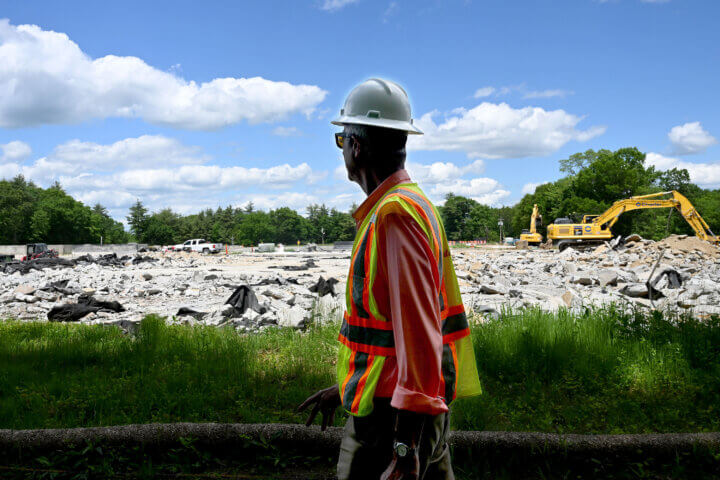By Erin Tiernan — Erin@concordbridge.org
Lingering questions about the true cost of a federal Superfund site have stumped members of a task force charged with recommending whether the Select Board should strike a deal to acquire the land.
“We couldn’t determine the key terms of the deal,” task force member David Ropeik told The Concord Bridge.
Instead of providing a simple yes or no, task force members will recommend that the town “move forward on the path” toward potentially acquiring the 46-acre site at 2229 Main Street.
Members planned to vote for approval at Tuesday night’s meeting, but a lengthy executive session meant there wasn’t enough time to debate and decide, Ropeik said.
That vote is scheduled for October 15.
The U.S. Environmental Protection Agency is nearing the end of a decades-long cleanup estimated to cost more than $300 million by its completion in 2029. The land is being remediated to the highest standard, which officials say means it will be safe for almost any future use, including housing.
The federal government has signaled interest in offloading the former Nuclear Metals site to the town, and EPA officials previously told The Bridge that negotiations would be “favorable” for Concord.
But 2229 Main Street Advisory Task Force members aren’t willing to hinge any recommendations on the feds’ “informal” promise, Ropeik said.
Unanswered questions
Ropeik said the task force pivoted away from deciding whether the town should acquire the 46-acre Superfund site when it became clear the variables were extensive and complicated.
Over the two years since the task force was created, members have engaged in hundreds of hours of research and interviews but have been unable to clearly answer how much the land would cost the town to acquire — including ongoing liabilities.
“We couldn’t figure out what we were asked to figure out,” Ropeik said of the task force’s punt.
Members have combed the available information and are poised to recommend that Ropeik recognizes the apparent “benefits” of town control of the land yet acknowledges the many unknowns precluding a fully informed yes-or-no decision. Members will urge the Select Board to resolve any lingering questions about the negotiations.
The task force’s work will be done once it approves its recommendation to the Select Board and accompanying report, which is expected sometime in December.
The Select Board is entirely responsible for the next steps, including whether to negotiate to acquire the land and setting the terms for any potential deal.
Next steps
The town has various mechanisms for taking the land, which the EPA considers “orphaned” after former private property owners abandoned it during bankruptcy. These could include seizing the property for nonpayment of back taxes or eminent domain.
First, the Select Board would settle any liens against the property. The federal government, which has incurred 93 percent of the still-expanding cleanup costs, has attached liens, and at least one other private mortgage lien is active, the EPA previously told The Bridge.
EPA officials say the government is “not interested in making money” off 2229 Main Street and is motivated for the town to take over the property so it can be put back into public use. Should the town strike a deal with private developers or otherwise seek to turn a profit, federal officials said some type of profit-sharing agreement would be part of negotiations.
Select Board Chairman Mary Hartman recently told The Bridge that members will vote on whether to enter negotiations after reviewing the task force’s report and recommendation and weighing town needs. She said a detailed land-use matrix due in the coming months will help inform the decision. The document will audit available properties and their redevelopment potential and account for needs, including affordable housing and new public works and public safety buildings.






